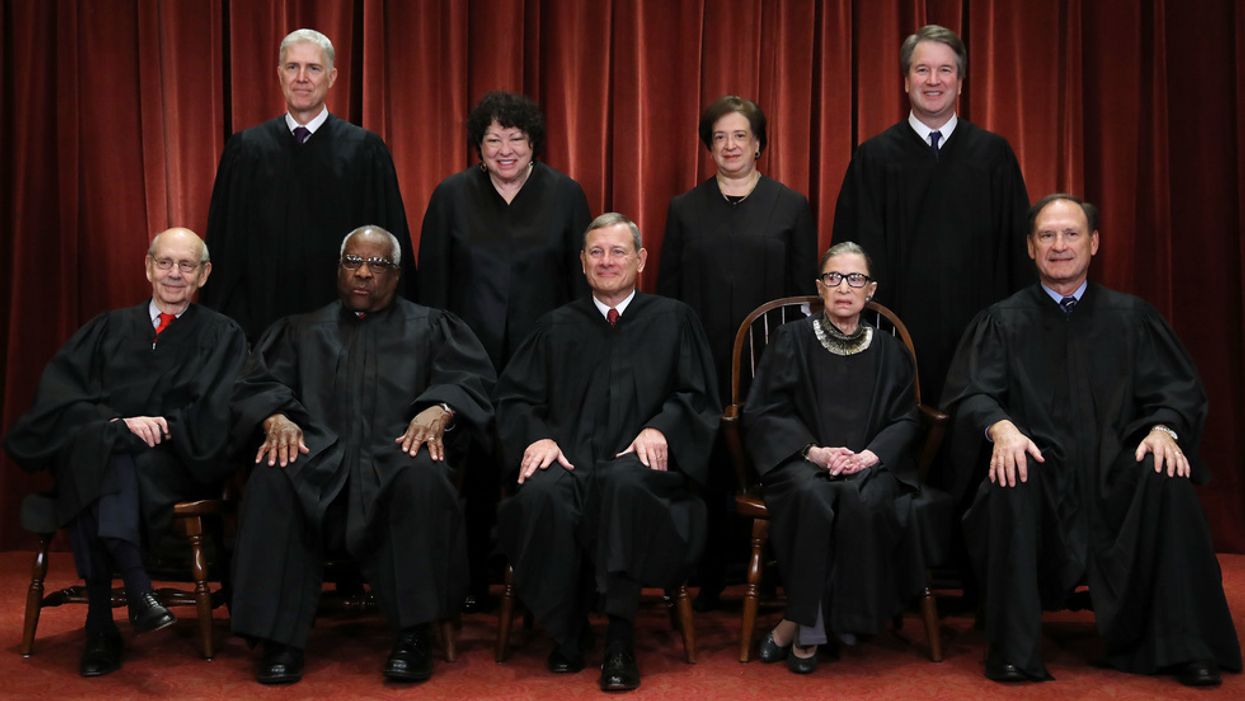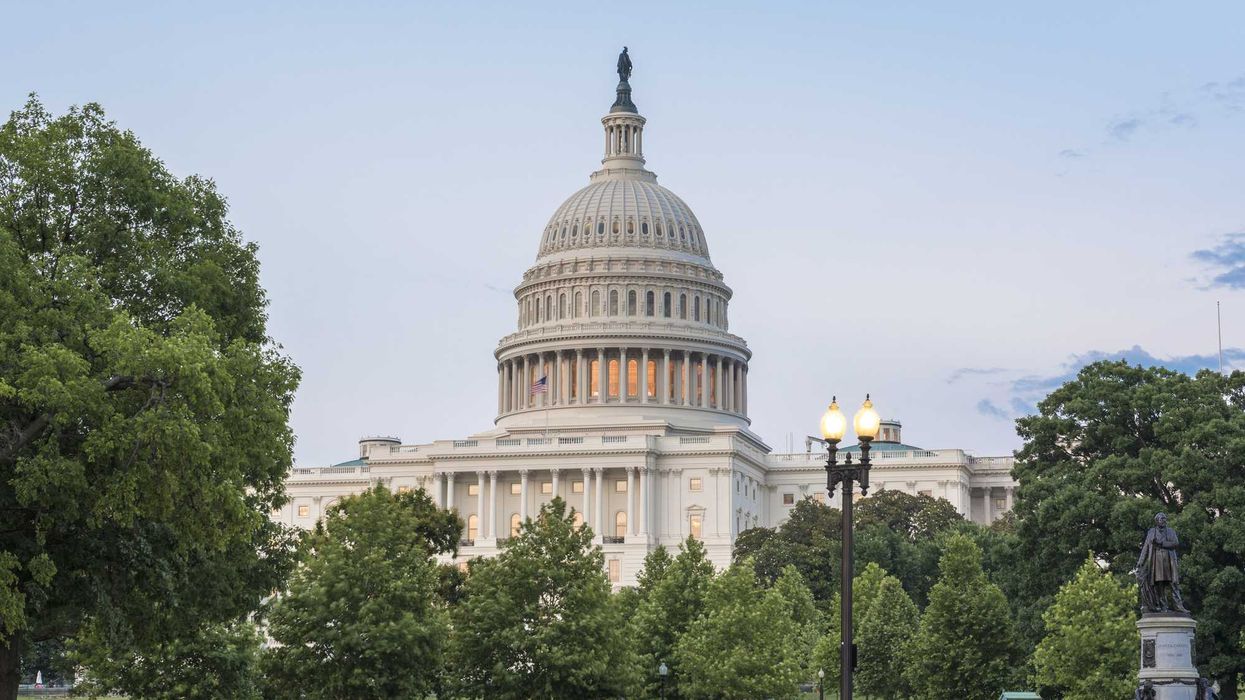Johnson is executive director of Election Reformers Network, an organization of election experts advancing nonpartisan reforms to U.S. democratic institutions.
With all eyes on the threats outsiders pose to the next presidential election, it seems we have forgotten the self-made dysfunction at the center of our democracy. Another presidential election approaches, with another victory to the popular vote loser a distinct possibility. Campaigns will again focus exclusively on a handful of states, and voting will be an inconsequential civic gesture for the vast majority. Other pitfalls lurk that we largely ignore, like another Florida-style recount or the decision getting "thrown to the House," which could give final say to the minority party.
A verdict Wednesday from the 10th U.S. Circuit Court of Appeals in Denver may add another Jack-in-the-box element: electors free to vote as they choose, regardless of the results in their state. If the Supreme Court agrees that Colorado's removal of a faithless elector in 2016 was unconstitutional, a new level of uncertainty will pervade our presidential elections.
A solution to these many problems, the National Popular Vote, has made considerable progress in blue states this year, but faces a long road. NPV needs to win enactment in purple states like Wisconsin and Pennsylvania, and then survive this Supreme Court, where the majority seems to have little concern for the needs of our democracy, as the Rucho v. Common Cause decision illustrates. In the words of scholar Edward Foley, the majority "rejects the primacy of democracy as an organizing constitutional principle."
At least with stopping partisan gerrymandering, we have a fallback after the Supreme Court decided not to act: state level independent redistricting commissions. We have no such developed, viable alternative to NPV; Rucho makes clear it is time to start working on one.
NPV tries to bring to this country the democratic norm that every vote should be equal. The Constitution of course gives small states relatively greater weight in the Electoral College and the desire of most small states to keep that advantage has doomed hundreds of amendments for a direct national election.
NPV dodges the amendment hurdle through an agreement among states establishing a majority block of electors, all committed to voting for the winner of the popular vote. Fifteen states and the District of Columbia have enacted the agreement so far, and with passage by states possessing another 74 electoral votes, NPV will reach its trigger and go into effect.
Although states have the right under Article II to allocate their electoral votes as they choose, the Supreme Court will likely have concerns with states' voting together as a controlling block. It has been argued that the Founders sought to prevent such "combinations among the states" and thus required electors to meet in their respective states on the same day.
A Supreme Court majority unsympathetic to the "primacy of democracy" may also reason that NPV changes presidential electing power granted to states in the Constitution. A state like Montana would effectively go from having roughly .6 percent impact (Montana's electoral votes divided by 538) to .3 percent impact (Montana's voting population divided by the national electorate), and this change would come about without an amendment, via an agreement among some states that Montana is unlikely to join.
Making every vote equal also makes NPV politically divisive and is a main reason the agreement has only passed in blue states. Red state opposition stems partly from the nature of President Trump's victory, but also reflects strongly held views among conservatives about the nature of our country. "We're organized as a republic. We're not a direct democracy," said Colorado organizer Rose Pugliese in late July as she submitted signatures putting a repeal of NPV on the 2020 ballot. "The Founding Fathers set that up to make sure that large population bases do not overrun smaller populations."
It is disconcerting that putting every citizen on equal footing is perceived as a threat, but the good news is we don't actually have to win that debate to make progress on presidential election reform. From a practical political perspective, small states having disproportionate weight in the Electoral College is actually not a problem. The average red state voter has almost exactly the same weight in the Electoral College as the average blue state voter. Donald Trump and George W. Bush won inverted victories in 2016 and 2000 not because of small states but because they won states with small margins of victory under winner-take-all rules.
So instead of focusing on "every vote should be equal," let's work on ending the "winner take all" system that in 48 states out of 50 grants all electoral votes to one candidate.
The often discussed congressional district system used in Maine and Nebraska injects gerrymandering into presidential elections and still wastes the votes of a large share of the electorate.That leaves only one option: allocating electoral votes proportionally based on the popular vote in each state.
One of the two amendment bills to advance in Congress over the last century relied on this method, the mostly forgotten Lodge-Gossett amendment, which passed the Senate in 1950. Lodge-Gossett would do away with the human electors but maintains the existing distribution of votes among the states. Candidates gain electoral votes, or fractions of votes, in proportion to the results by state, with the proportional calculation carried out three places to minimize rounding.
A weakness of Lodge-Gossett is that is requires a 40 percent threshold for victory, with a tie-breaker vote in a joint session of Congress if no candidate reaches that level. It would be much better to use ranked-choice voting, which lets voters rank candidates by preference and employs an instant runoff mechanism to ensure a majority winner in nearly all cases.In this way, we also solve the longstanding problem of third-party and independent candidates, who should be able to meaningfully participate in elections, not just spoil them. Ranked-choice voting is politically neutral; had it been used in recent elections, Hillary Clinton and Al Gore probably would have won, but George H.W. Bush probably would have won as well.
This combination — proportional allocation plus ranked-choice voting — does not make every vote equal, but it fixes every other major problem with our presidential election system. It makes every vote count and that gives presidential candidates reason to pay attention to every state. The election would still be state-based, consistent with our federal origins. And it would avoid the problem of a single nationwide election conducted under differing state laws, an issue with NPV. A victory for the second place finisher would become highly unlikely (though not mathematically impossible). Removing the electors takes away the rogue elector risk and opens up the post-election calendar, which is much too compressed to manage contested state results (as Florida illustrated in 2000).
NPV should still be supported in the states still to debate it, and defended in Colorado, because NPV would certainly be an improvement over what we have now. But in parallel, we should start preparing this alternative.
The amendment bar is of course incredibly high, so high that many reform advocates reject the approach out of hand. But this fundamentally centrist plan offers enough benefits to the various stakeholders to suggest routes to victory. Every state, except swing states, would be better off because they would become more relevant to presidential campaigns. Small rural states in particular would benefit as the most affordable ground to gain electoral votes. Democrats would gain an end to second place victories, but would concede to Republicans the preservation of the state-based elections and the existing Electoral College math. Both parties would benefit from removing the uncertainty of faithless electors and "thrown to the House" situations.
While still an enormous challenge, it's not clear we have a choice but to try to amend. To again quote Edward Foley's commentary on the Rucho decision (aptly entitled "Blame the Constitution, not the Court"): "If the Constitution as written is insufficiently democratic, then the way to fix it is to harness popular anger against the Constitution itself."



















